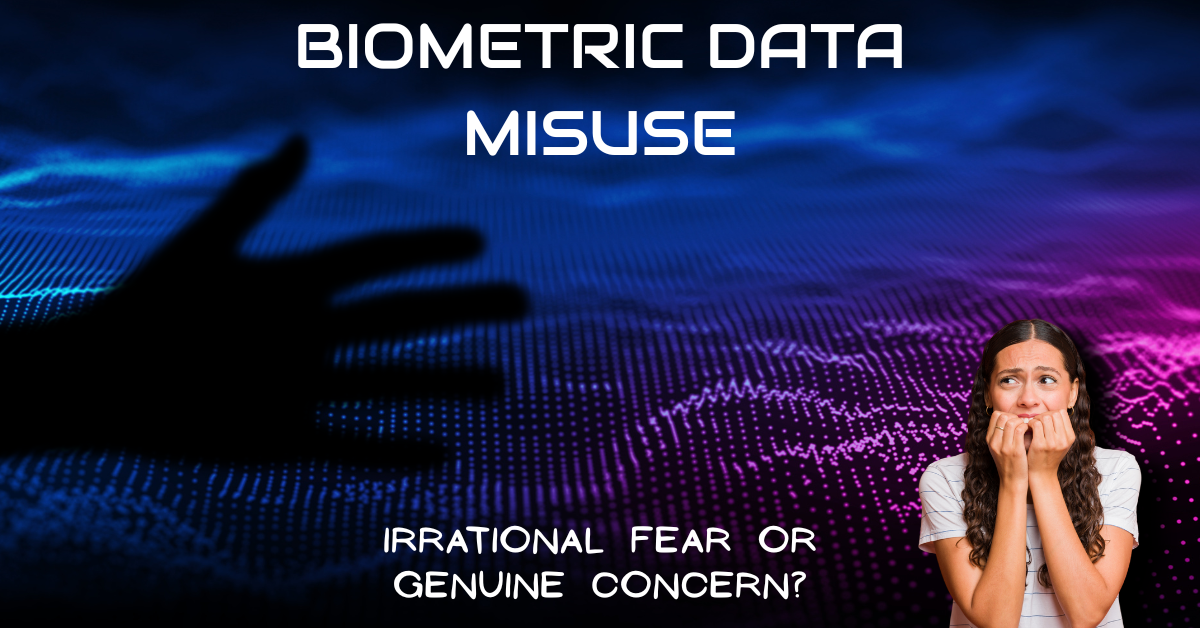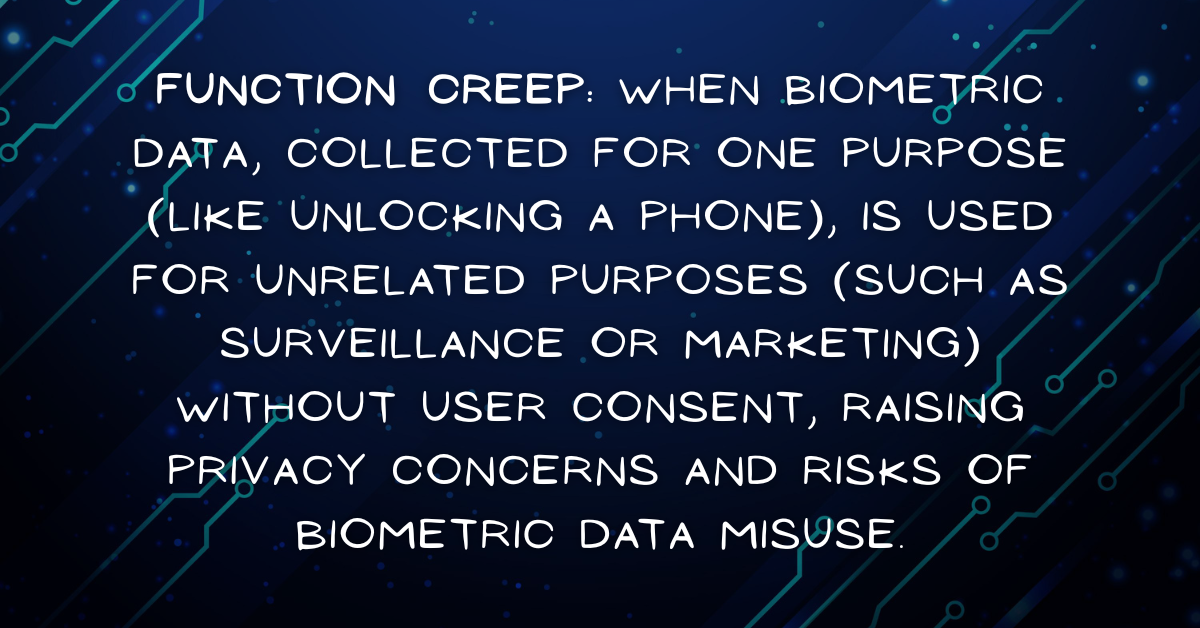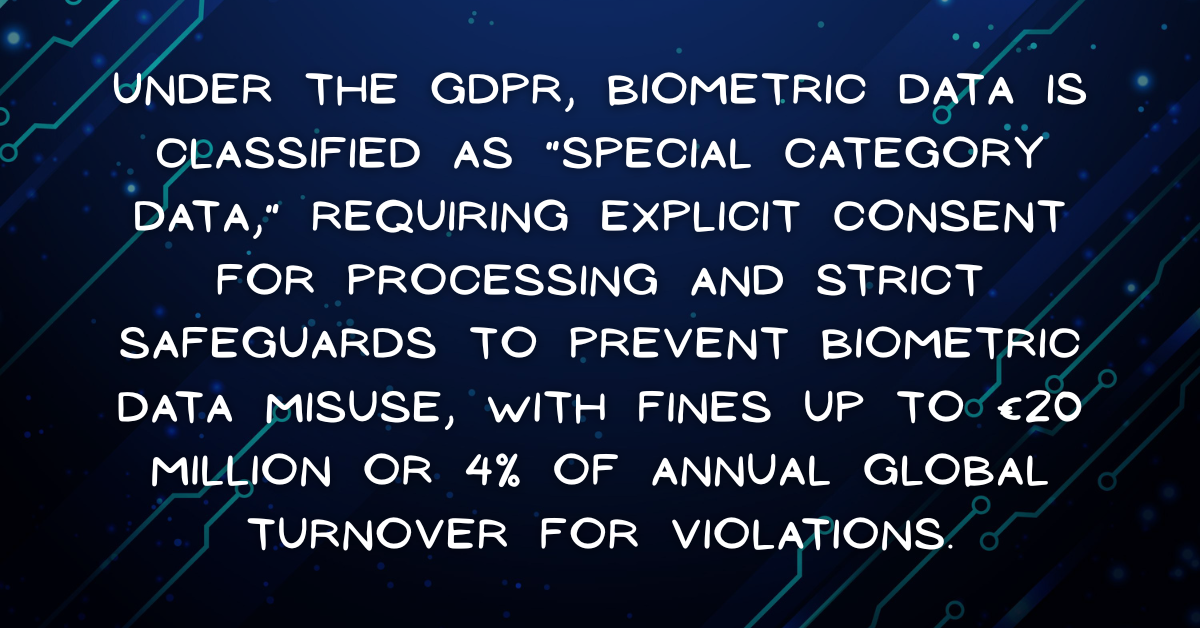Categories
In a world where a fingerprint unlocks your phone and a facial scan speeds you through airport security, biometric data is now part of everyday life. This technology offers unmatched convenience and security, but it also sparks fears of biometric data misuse.
Are these concerns justified, or are they fueled by exaggerated worries about privacy invasion? This article examines the risks and benefits of biometrics, exploring real-world issues, safeguards, and the balance needed to embrace innovation without sacrificing trust.

Biometric data consists of unique physical or behavioral traits used to identify individuals. Its distinct nature makes it both powerful and vulnerable to biometric data misuse.
Biometric systems have expanded beyond high-security settings, becoming integral to daily interactions. Their growth raises questions about biometric data misuse.
Fingerprint and facial recognition in phones and wearables.
Automated passport checks using iris or facial scans.
Time-tracking via fingerprints or face scans.
Retailers use biometrics for payments or security.
The potential for biometric data misuse is significant due to its permanence and sensitivity. Unlike passwords, biometric data cannot be reset, making breaches or misuse particularly damaging. Below, we explore the primary risks in detail, highlighting why these concerns resonate with the public and demand attention.
Biometric databases are attractive targets for cybercriminals. A single breach can expose millions of records, leading to identity theft or unauthorized access. For example, the 2019 Suprema breach compromised fingerprints and facial data of over 1 million people, revealing vulnerabilities even in specialized security firms.
Once stolen, biometric data can be used to spoof identities, and its permanence means victims face lifelong risks. Unlike financial data, which can be reissued, compromised biometrics leave individuals exposed with no recourse, amplifying the stakes of biometric data misuse.
Biometric data collected for one purpose can be repurposed without consent, a practice known as function creep. For instance, data gathered for workplace access might be shared with law enforcement or third parties, violating user trust.
Governments in some regions have used biometric systems for mass surveillance, raising fears of authoritarian overreach. Such misuse erodes public confidence, as individuals lose control over their personal data, highlighting the need for strict oversight to prevent misuse.

Many users are unaware of how their biometric data is collected or used. Consent is often buried in dense terms and conditions, leaving individuals uninformed about the implications. For example, apps using facial recognition may not clearly disclose data-sharing practices, leading to unintended exposure.
This lack of transparency fuels distrust, as users feel powerless over their biometric data. Addressing data misuse requires clear, accessible consent processes to empower individuals and ensure they understand the risks involved.
The permanence of biometric data is its greatest strength and its greatest weakness. Unlike passwords, which can be changed, a compromised fingerprint or iris scan cannot be replaced. This makes biometric data misuse particularly devastating, as stolen data remains usable by malicious actors indefinitely.
For instance, hackers could use stolen biometrics to access secure systems or create fraudulent identities. The irreversible nature of this loss underscores the need for robust security measures to protect biometric data from misuse.
Biometric systems, while advanced, are not infallible. Technical flaws can amplify the risks of biometric data misuse.
High-quality fakes, like 3D-printed fingerprints, can trick older systems.
Facial recognition errors disproportionately affect certain groups.
False positives or negatives can compromise security.
Poorly secured databases invite breaches and misuse.
Regulations governing biometric data vary globally, impacting how biometric data misuse is addressed.
Strict rules classify biometrics as sensitive, requiring clear consent.
State laws like Illinois’ BIPA enforces strict biometric protections.
Rapid biometric adoption often outpaces privacy laws.
Inconsistent global standards create vulnerabilities.
Despite valid concerns, some argue that fears of biometric data misuse are exaggerated when proper safeguards are implemented. Advances in technology and regulation have reduced risks, making biometrics a reliable tool for security and convenience. Below, we explore why optimism may be warranted, provided responsible practices are followed.
Modern biometric systems use advanced encryption to protect data from unauthorized access. By converting biometric traits into encrypted templates, systems ensure that raw data, like a fingerprint image, is not stored directly.
For example, Apple’s Face ID encrypts data on-device, reducing the risk of data misuse during a breach. These measures make it harder for hackers to exploit stolen data, offering a strong defense against misuse and bolstering confidence in biometric technology.
Laws like the GDPR in Europe and BIPA in Illinois impose strict rules on biometric data handling. These regulations mandate clear consent, limit data sharing, and enforce hefty fines for violations.
Such frameworks deter organizations from engaging in biometric data misuse by holding them accountable. As regulatory environments strengthen globally, these protections help mitigate risks, reassuring users that their data is safeguarded against unethical practices.

Many modern devices process biometric data locally rather than in centralized databases, significantly reducing the risk of large-scale breaches. For instance, smartphones like those using Google’s Titan chip store biometric data on-device, minimizing exposure to external threats.
This approach limits the potential for biometric data misuse by ensuring data never leaves the user’s device, offering a practical solution to privacy concerns and enhancing trust in biometric systems.
Biometrics provide a higher level of security than traditional passwords, significantly reducing fraud. For example, banks using fingerprint or facial authentication report lower rates of account takeovers.
By replacing easily compromised passwords, biometrics make it harder for malicious actors to gain unauthorized access. This security benefit counters fears of biometric data misuse, as the technology’s ability to prevent fraud often outweighs the risks when proper safeguards are in place.
Mitigating biometric data misuse requires cooperation between individuals, organizations, and regulators.
Ensure users understand how their data is used.
Use encryption and decentralized storage systems.
Adhere to global privacy laws like GDPR or BIPA.
Allow individuals to disable or control biometric features.
Concerns about biometric data misuse are neither irrational nor insurmountable. The permanence and sensitivity of biometric data demand robust protections, but fear shouldn’t halt progress. With strong regulations, transparent practices, and secure technologies, biometrics can enhance security and convenience without compromising privacy. Society must strike a balance, fostering innovation while ensuring trust through accountability and informed choice.